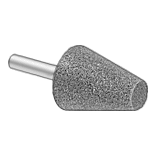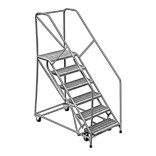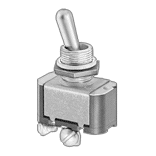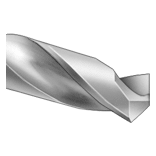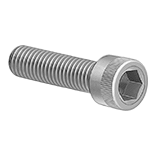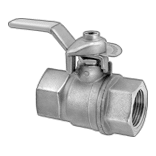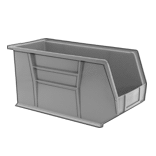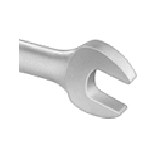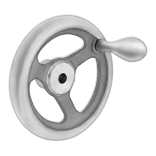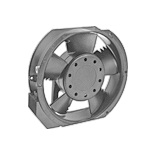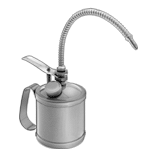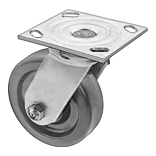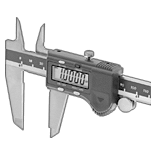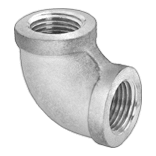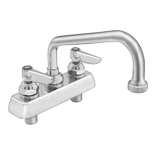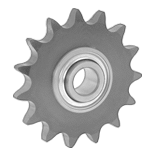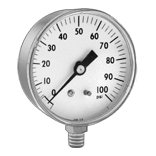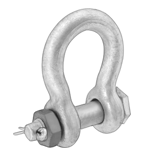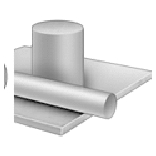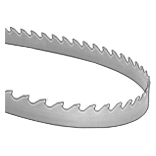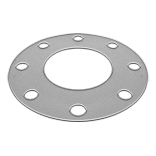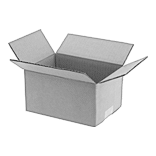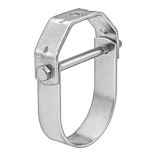About Timer Relays
More
Circular-Pin Relays


8-Terminal
Relay
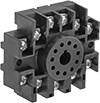
The circular pin terminals plug into relay sockets for easy installation. Also known as ice cube relays.
Relays rated for horsepower (hp) are built to handle tough, repetitive-use applications.
Relay sockets (sold separately) mount to 35 mm DIN rail (also known as DIN 3 rail) or can be mounted to a flat surface.
Relays | Relay Sockets | ||||||||||
|---|---|---|---|---|---|---|---|---|---|---|---|
| Number of Terminals | Input Voltage | Control Current, mA | Switching Current @ Voltage | hp @ Switching Voltage | Ht. | Wd. | Dp. | Each | Each | ||
1 Circuit Controlled with 1 Off (Normally Open) or 1 On (Normally Closed)—SPDT | |||||||||||
| 8 | 110V DC | 11 | 10 A @ 240 V AC/28 V DC | 1/3 hp @ 120 V AC 1/2 hp @ 240 V AC | 1.4" | 1.4" | 2" | 0000000 | 000000 | 0000000 | 00000 |
Circuit Board Relays

Smaller than relays with electrical wiring, these relays fit in compact devices. Mount them through holes on circuit boards with their solder pin terminals. Use them to control heaters, fans, and other high-power components from a low-power circuit.
For technical drawings and 3-D models, click on a part number.
| Number of Terminals | Input Voltage | Control Current, mA | Switching Current @ Voltage | Max. Switching Voltage | Mechanical Life Cycles | Ht. | Wd. | Dp. | Pin Lg. | Each | |
Mechanical | |||||||||||
|---|---|---|---|---|---|---|---|---|---|---|---|
1 Circuit Controlled with 1 Off (Normally Open) or 1 On (Normally Closed)—SPDT | |||||||||||
| 8 | 110V DC | 4.5 | 16 A @ 240 V AC | 250V AC | 10,000,000 | 1.1" | 0.5" | 0.6" | 0.1" | 0000000 | 00000 |
2 Circuits Controlled with 2 Off (Normally Open) or 2 On (Normally Closed)—DPDT | |||||||||||
| 8 | 110V DC | 4.5 | 8 A @ 240 V AC | 250V AC | 10,000,000 | 1.1" | 0.5" | 0.6" | 0.1" | 0000000 | 0000 |
Dual-Channel DIN-Rail Mount Multifunction Timer Relays


Control two steps of an electrical process from a single relay—with two fully independent channels and 30 different functions, these relays give you a wide range of possibilities. Each channel has its own output, so you can run two different functions (one per circuit) at the same time. Mount them to 35 mm DIN rails (also known as DIN 3 rail) and connect them to lighting systems, conveyors, electric motors, and other systems. These relays are UL Listed, C-UL Listed, and CE Marked, meaning they meet U.S. and international safety standards.
View times, function names, and on/off status for both channels at once using the digital display. You can program these relays with a joystick on the face, which is easier to use than the rotary dials on traditional relays. You can also program them using an Android phone with NFC (near field communication) capability, which is commonly used for mobile payment. Once you select the functions you need, hold the phone against the relay to program.
Connect switches to inputs on these relays to trigger, pause, and reset functions. Turning on a switch connected to the pause input stops functions until the switch is turned off. A switch connected to the reset input will start functions from the beginning. If the relay is actively receiving a signal, the function will restart right away. If there is no signal, the function will stop and reset, so it starts from the beginning the next time it’s triggered. You can use switches to pause or reset both channels at once, or for one channel only.
Although these relays have 30 different functions, they all fall into 10 categories. Within these categories, you can select different functions to allow you to add a switch, program a delay, or change how the relay responds to a trigger (turning on or off, pausing, or resetting).
Manual Switch Control—Use these functions to turn the relay on and off with a switch.
Fixed On/Off—The on function keeps the relay on whenever input voltage is applied; it will only turn off if the voltage is removed. The off function keeps the relay in an off state, even if input voltage is applied.
Switch-On (Single-Shot)—These functions require a switch to activate the relay, which stays on for the programmed amount of time. For example, lights in a storage room are turned on with a switch and stay on for a set time before turning off.
Delayed Start (Delay-on-Make)—These functions allow you to set how long it takes for the relay to turn on after input voltage is applied. For example, a drill starts pumping lubricant immediately, but it does not start rotating until the set time has elapsed.
Delayed Switch-Off (Delay-on-Break)—These functions use a switch instead of input voltage. When the switch is turned off, the relay remains on for a programmed amount of time before turning off. For example, a projector’s light is turned off with a switch, but its cooling fan continues to run for a set time.
Delayed Switch-On with Delayed Switch-Off—This function uses a switch instead of an input voltage. It allows you to set how long it takes the relay to turn on after a switch is turned on, and how long it will stay on after the switch is turned off. For example, a furnace turns on, but the fan doesn’t start pushing air through the vents until it has been heated. When the furnace turns off, the fan keeps blowing to circulate all the hot air.
Interval—These functions use input voltage to turn on the relay for a programmed amount of time. For example, when a part moving down a conveyor reaches a certain location, a cleaning spray comes on for a set amount of time.
Repeat Cycle—When input voltage is applied, the relay turns on for a duration, then off for the same duration. They alternate between the two until input voltage is removed. For example, a flashing light stays on and off for equal periods of time.
Asymmetrical Repeat Cycle—These functions start with an on-cycle and then have an off-cycle, but these cycles have different durations. The cycles repeat until input voltage is removed. For example, a sprinkler system sprays in short bursts followed by longer rest periods, on and off until input voltage is removed.
Switch-On Asymmetrical Repeat Cycle—These functions require a switch to activate the timing function. The input voltage is applied the whole time, and when you turn the switch on, the relay begins with an on-cycle followed by an off-cycle. These cycles have different durations, and they repeat until you turn the switch off. They could be used to turn on a motor or other system for a short period and then turn it off for a longer rest period, repeating that pattern until the switch is turned off.
For technical drawings and 3-D models, click on a part number.
Timing Range | |||||||||||||
|---|---|---|---|---|---|---|---|---|---|---|---|---|---|
| No. of Terminals | Input Voltage | Control Current, mA | Timer Relay Function | No. of | Overall | Switching Current @ 240V AC | Max. Switching Voltage | Ht. | Wd. | Dp. | Features | Each | |
2 Circuit Controlled with 2 Off (Normally Open) and 2 On (Normally Closed)—DPDT | |||||||||||||
| 12 | 120V AC, 240V AC, 110V DC, 240V DC | 16 | Manual Switch Control Fixed On/Off Switch-On (Single-Shot) Delayed Start (Delay-on-Make) Delayed Switch-Off (Delay-on-Break) Delayed Switch-On with Delayed Switch-Off Interval Repeat Cycle Asymmetrical Repeat Cycle Switch-On Asymmetrical Repeat Cycle | 30 | 0.1 sec.-9,999 hrs. | 16A | 240V AC | 3.4" | 1.4" | 2.2" | 2 Individually Programmable Timers, LCD Screen | 0000000 | 0000000 |
Solid State DIN-Rail Mount Multifunction Timer Relays

Quick-Disconnect
Terminals

For fast installation, mount these relays to 35 mm DIN rail (also known as DIN 3 rail). They also mount to flat surfaces. With no moving parts, these solid state relays last longer and require less maintenance, are quieter, and switch faster than mechanical relays. They provide a variety of timing functions in one relay.
Use relays with DIP switches for more precise control than knobs. They make it easier to set multiple relays to the same timing range.
Timing Range | |||||||||||||
|---|---|---|---|---|---|---|---|---|---|---|---|---|---|
| No. of Terminals | Input Voltage | Control Current, mA | Timer Relay Function | No. of | O'all | Switching Current @ 240V AC | Max. Switching Voltage | Ht. | Wd. | Dp. | Wire Connection Type | Each | |
Relays with DIP Switches | |||||||||||||
1 Circuit Control with 1 Off (Normally Open)—SPST-NO | |||||||||||||
| 4 | 9V DC, 12V DC, 24V DC, 48V DC, 60V DC, 110V DC | 8 | Delayed Start (Delay-on-Make) Interval Switch-On (Single-Shot) Delayed Switch-Off (Delay-on-Break) Repeat Cycle | 4 | 0.1 sec.-63 min. | 0.7A | 240V AC | 3" | 0.7" | 2.4" | Quick-Disconnect Terminals | 0000000 | 000000 |
| 6 | 9V DC, 12V DC, 24V DC, 48V DC, 60V DC, 110V DC | 8 | Delayed Start (Delay-on-Make) Interval Switch-On (Single-Shot) Delayed Switch-Off (Delay-on-Break) Repeat Cycle | 4 | 0.1 sec.-63 min. | 0.7A | 240V AC | 3" | 0.7" | 2.4" | Screw Terminals | 0000000 | 000000 |
Relays with Knob | |||||||||||||
1 Circuit Control with 1 Off (Normally Open)—SPST-NO | |||||||||||||
| 4 | 9V DC, 12V DC, 24V DC, 48V DC, 60V DC, 110V DC | 8 | Delayed Start (Delay-on-Make) Interval Switch-On (Single-Shot) Delayed Switch-Off (Delay-on-Break) Repeat Cycle | 4 | 0.1 sec.-100 min. | 0.7A | 240V AC | 3" | 0.7" | 2.4" | Quick-Disconnect Terminals | 0000000 | 00000 |
| 6 | 9V DC, 12V DC, 24V DC, 48V DC, 60V DC, 110V DC | 8 | Delayed Start (Delay-on-Make) Interval Switch-On (Single-Shot) Delayed Switch-Off (Delay-on-Break) Repeat Cycle | 4 | 0.1 sec.-100 min. | 0.7A | 240V AC | 3" | 0.7" | 2.4" | Screw Terminals | 0000000 | 000000 |
Solid State Versa-Mount Multifunction Timer Relays
Install these relays in a panel cutout or plug them into a relay socket. Unlike mechanical relays, these solid state relays have no moving parts, so they require less maintenance and last longer, are quieter, and switch faster. They give you a variety of timing functions in one relay.
Relay sockets (sold separately) mount to
Mounting brackets (sold separately) are required to mount relays into a panel cutout.

Timer Relays | |||||||||||||
|---|---|---|---|---|---|---|---|---|---|---|---|---|---|
Timing Range | Relay Sockets | ||||||||||||
| No. of Terminals | Input Voltage | Control Current, mA | Timer Relay Function | No. of | Overall | Switching Current @ 240V AC | Ht. | Wd. | Dp. | Each | Each | ||
2 Circuits Controlled with 2 Off (Normally Open) or 2 On (Normally Closed)—DPDT | |||||||||||||
| 8 | 120V AC, 240V AC, 110V DC, 120V DC | 13 | Delayed Start (Delay-on-Make) Interval Switch-On (Single-Shot) Repeat Cycle | 4 | 0.05 sec.-300 hrs. | 5A | 1.9" | 1.9" | 2.3" | 00000000 | 0000000 | 0000000 | 00000 |
Mounting Hole | ||||||||||
|---|---|---|---|---|---|---|---|---|---|---|
| Material | Mounting Location | No. of | Ctr.-to-Ctr. | Dia. | Mounting Fasteners Included | Screw Size | Ht. | Wd. | Each | |
| Polycarbonate | Panel | 2 | 3" | 5mm | Yes | M5 | 2.28" | 1.89" | 0000000 | 000000 |
Solid State Versa-Mount Timer Relays
Mount these timer relays in a panel cutout or plug them into a relay socket for quick installation. Capable of fast switching, they are solid state and have no moving parts, so they require less maintenance, last longer, and are quieter than mechanical relays. Unlike standard relays that switch on and off immediately, timer relays delay before the circuit stops or starts.
Relays with a repeat cycle alternate between an on cycle and off cycle of equal durations until input voltage is removed. A common example would be a flashing light.
Relays with an asymmetrical repeat cycle begin in an on state, then alternate between different durations of off and on for as long as input voltage is applied. For example, a heating system starts with an on period, then switches to an off period once the desired temperature is reached.
Relays with a start-off asymmetrical repeat cycle begin in an off state, then alternate between different durations of on and off for as long as input voltage is applied. For example, an irrigation system receives a signal and starts in the off state, allowing water to fill before switching on to start pumping.
Relay sockets (sold separately) mount to 35 mm DIN rail (also known as DIN 3 rail) or can be mounted to a flat surface.
Mounting brackets (sold separately) are required to mount the relay into a panel.
For technical drawings and 3-D models, click on a part number.
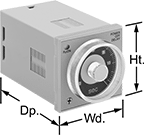

Timer Relays | ||||||||||||
|---|---|---|---|---|---|---|---|---|---|---|---|---|
Timing Range | Relay Sockets | |||||||||||
| Number of Terminals | Input Voltage | Control Current, mA | No. of | Overall | Switching Current @ 240V AC | Ht. | Wd. | Dp. | Each | Each | ||
Repeat Cycle | ||||||||||||
2 Circuits Controlled with 2 Off (Normally Open) or 2 On (Normally Closed)—DPDT | ||||||||||||
| 8 | 120V AC, 240V AC, 110V DC, 120V DC | 100 | 4 | 0.05 sec.-300 hrs. | 5A | 1.9" | 1.9" | 3.3" | 00000000 | 0000000 | 0000000 | 00000 |
Asymmetrical Repeat Cycle | ||||||||||||
2 Circuits Controlled with 2 Off (Normally Open) or 2 On (Normally Closed)—DPDT | ||||||||||||
| 8 | 120V AC, 240V AC, 110V DC, 120V DC | 41 | 4 | 0.05 sec.-300 hrs. | 5A | 1.9" | 1.9" | 3.3" | 000000000 | 000000 | 0000000 | 0000 |
| 11 | 120V AC, 240V AC, 110V DC, 120V DC | 41 | 4 | 0.05 sec.-300 hrs. | 5A | 1.9" | 1.9" | 3.3" | 0000000 | 000000 | 0000000 | 00000 |
Start-Off Asymmetrical Repeat Cycle | ||||||||||||
2 Circuits Controlled with 2 Off (Normally Open) or 2 On (Normally Closed)—DPDT | ||||||||||||
| 8 | 120V AC, 240V AC, 110V DC, 120V DC | 41 | 4 | 0.05 sec.-300 hrs. | 5A | 1.9" | 1.9" | 3.3" | 000000000 | 000000 | 0000000 | 0000 |
| 11 | 120V AC, 240V AC, 110V DC, 120V DC | 41 | 4 | 0.05 sec.-300 hrs. | 5A | 1.9" | 1.9" | 3.3" | 00000000 | 000000 | 0000000 | 00000 |

Mounting Hole | ||||||||||
|---|---|---|---|---|---|---|---|---|---|---|
| Material | Mounting Location | No. of | Ctr.-to-Ctr. | Dia. | Mounting Fasteners Included | Screw Size | Ht. | Wd. | Each | |
| Polycarbonate | Panel | 2 | 3" | 5mm | Yes | M5 | 2.28" | 1.89" | 0000000 | 000000 |
